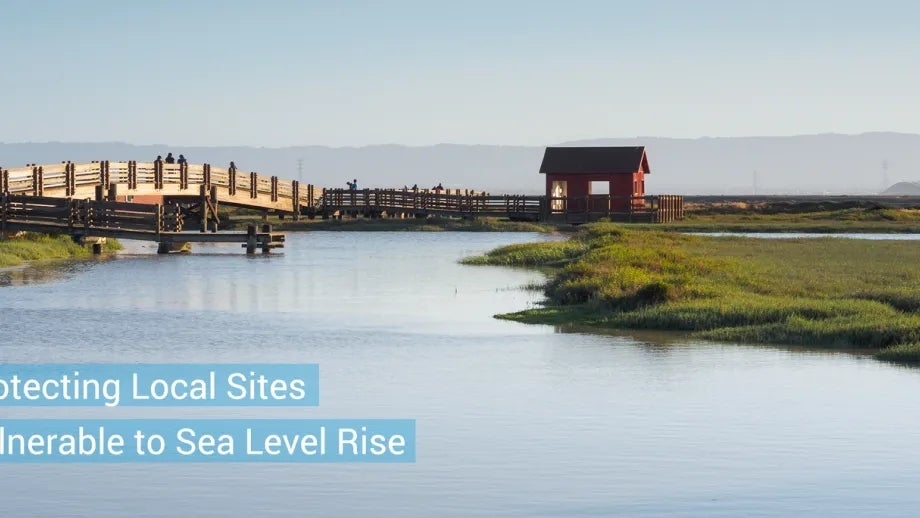Resilient by Design: Call for Grant Proposals & Project Sites
Attention architects, engineers, planners, academics and other experts dealing with the fields of climate change and sea-level rise: The Design Brief and RFQ for the Resilient by Design | Bay Area Challenge will be discussed at an in-depth briefing set for Friday, June 16, 2017, from 9 a.m. to 11 a.m. at the Bay Area Metro Center in San Francisco. (View the document here.) You can attend the briefing in person or via an online webinar, and a recording of the webinar will be posted to the project website for later reference.
__________________________________________________________________
Ten innovative concepts for combatting sea-level rise and other climate threats. Ten international design teams. Ten at-risk Bay Area locations. Those figures capture the essence of Resilient by Design | Bay Area Challenge, which got under way in earnest with the recent release of a Design Brief and Request for Qualifications (RFQ). At the same time, contest sponsors have issued an Open Call for Site Ideas, in which residents, stakeholders and local officials are being asked to identify the Bay Area’s most vulnerable ecological systems and most vulnerable bayfront communities, as well as infrastructure at risk from a natural disaster. A submission form and sample sites can be viewed here. The call for site ideas closes July 14, 2017, but interested parties are encouraged to submit sooner rather than later.
"The Bay Area Challenge is looking for sites in shoreline communities that need the action and investment of local leaders and international experts and would benefit from collaborative research and innovative design," sponsors state in their material. "Rather than wait for disaster, we have the opportunity to come together to prepare for a more resilient future."
Launched on May 31, 2017, Resilient by Design | Bay Area Challenge is a collaborative research and design initiative that will bring together local, national and international design experts with community members and local leaders. The challenge will develop innovative solutions to address the effects of sea level rise, severe storms, flooding and earthquakes in communities around the San Francisco Bay. Design team submissions are due on July 7, 2017.
The RFQ will result in the selection of 10 design teams to be announced in early August 2017. Each team will receive up to $250,000 to develop their ideas. At the end of the yearlong process, the challenge will result in 10 creative and implementable design solutions for protecting the Bay Area’s most vulnerable shoreline communities from increasingly severe storms and flooding while also addressing critical issues such as disparities in housing, income and access to open space.
This initiative is based on Rebuild by Design, the award-winning model of a bold public-private collaboration that brought innovative design solutions to areas impacted by Hurricane Sandy in the New York region.
The Rockefeller Foundation funded this effort through a $4.6 million grant, which provided the necessary support to create and scale a model of the successful New York Rebuild by Design program — pioneered by the Foundation in partnership with the U.S. Department of Housing and Urban Development. Funders also include the Bay Area Regional Collaborative, The Seed Fund, the Santa Clara Valley Water District, the City and County of San Francisco, and MTC.
The Resilient by Design Executive Board is made up of leaders around the region representing: Bay Area Regional Collaborative, San Francisco Estuary Institute, Government Alliance on Race and Equity, Rebuild by Design, SPUR, State Coastal Conservancy, Bay Area Council, The San Francisco Foundation, and the cities of Richmond, Oakland, San Jose and San Francisco.


Submit your comment
In order to receive a reply to your comment, please provide an email address.